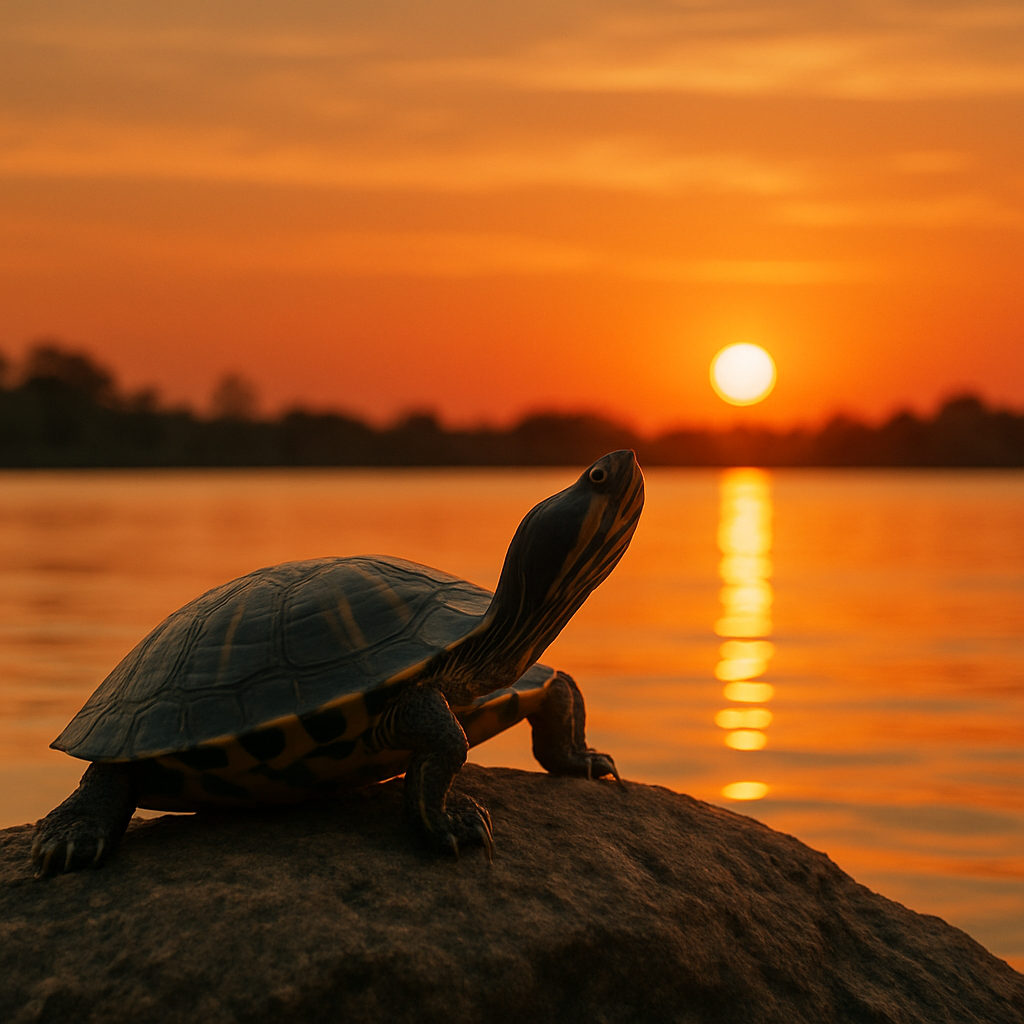Turtles are fascinating creatures with remarkable lifespans. They have captured human interest for centuries.
These ancient reptiles can live for decades, even centuries. Their longevity varies greatly among species.
Understanding turtle lifespans involves exploring diverse factors. These include species type, habitat, and environmental conditions.
Turtles’ long lives are linked to their slow metabolisms and unique adaptations. These traits have helped them survive for millions of years.
This guide will explore the lifespans of various turtle species. It will also explore factors affecting their longevity and how to care for pet turtles.
How Long Do Turtles Live? An Overview
Turtles are renowned for their impressive longevity. Some species can live over 100 years. However, turtle lifespans vary significantly.
The vast difference in turtle lifespans is often surprising. For instance, certain tortoises and sea turtles can outlive humans.
On average, most turtles live between 20 to 80 years. The wide range depends largely on the species and its environment.
Here’s a quick list of turtle lifespan averages:
- Galápagos tortoises: Over 150 years
- Sea turtles: 50 to 100 years
- Box turtles: Up to 50 years
Sea turtles generally have longer lifespans than smaller species. In addition to natural lifespan, human impact plays a role.
Lifespans of Different Turtle Species
Turtles come in many shapes and sizes, each with distinct lifespan traits. The Galápagos tortoise, for example, is known to live over 150 years. These tortoises are among the longest-living vertebrates on Earth.
Sea turtles also boast lengthy lifespans, ranging from 50 to 100 years. Their oceanic environments provide conditions favorable for such longevity. The leatherback sea turtle, for instance, can live up to a century.
In contrast, smaller turtles like box turtles have shorter lifespans. They typically live up to 50 years in the wild. Still, even these lifespans are impressive for reptiles.
Different environmental factors affect these lifespan variances. Protection from predators and steady food sources are crucial.
Here’s a summary of turtle life spans by species type:
- Galápagos tortoises: Over 150 years
- Leatherback sea turtles: Up to 100 years
- Box turtles: Up to 50 years
Understanding these differences emphasizes the need for species-specific conservation efforts.
Notable Long-Lived Turtles
Some turtles achieve fame due to their incredible ages. The Seychelles giant tortoise named Jonathan is one such example. He celebrated his 190th birthday, becoming the oldest known living terrestrial animal.
Another famous turtle is Harriet the Galápagos tortoise. She lived at the Australia Zoo until she was 175 years old. These stories highlight the extraordinary longevity turtles can achieve.

Factors Affecting Turtle Lifespan
Several factors influence how long turtles live. The environment plays a significant role. Turtles in stable, clean habitats tend to live longer.
Another crucial factor is diet. A balanced diet contributes to a turtle’s health and longevity. Access to a variety of nutrients is vital.
Human activities significantly impact turtle lifespans. Pollution and habitat destruction pose severe threats. Conservation efforts are essential to mitigate these effects.
Lastly, predation and disease affect turtles in the wild. Natural threats can shorten their lifespan considerably. Turtles with better defenses tend to live longer.
Key factors influencing turtle lifespans include:
- Environment
- Diet
- Human impact
- Predation and disease
Understanding these elements helps in conservation efforts. It guides how we can protect these resilient creatures for future generations.

Wild vs. Captive Turtle Life Expectancy
Turtle life expectancy varies greatly between wild and captive environments. In the wild, turtles face numerous dangers like predators and harsh weather, which can limit their lifespans.
In contrast, captive turtles often enjoy longer lives. They benefit from controlled environments with reliable food sources and medical care. Such conditions reduce threats and stress.
However, captivity presents unique challenges. Turtles need adequate space and stimulation to thrive. Neglecting these needs can lead to health problems. Overall, while captive turtles may live longer, the quality of their care is crucial.
Factors affecting turtle longevity in different environments include:
- Predation risks
- Environmental stability
- Availability of medical care
- Quality of care and habitat
Understanding these differences emphasizes the importance of proper turtle care, whether in the wild or captivity.
How to Help Pet Turtles Live Longer
Ensuring your pet turtle leads a long, healthy life requires dedication. Start by providing a balanced diet tailored to your turtle’s species. Nutrition plays a key role in their longevity and well-being.
Create an environment that mimics their natural habitat. Turtles thrive in spaces that meet their specific needs for temperature, light, and humidity. Proper habitat conditions reduce stress and promote health.
Regular health checks are vital. Routine visits to a vet can catch potential issues early. Monitor your turtle for signs of illness and respond quickly.
Steps to enhance pet turtle longevity:
- Provide a species-specific diet
- Maintain optimal habitat conditions
- Schedule regular veterinary check-ups

Taking these steps not only extends your pet’s life but also improves their quality of life.
Conservation and the Future of Turtle Longevity
Turtle populations face numerous threats that impact their lifespan and survival rates. Conservation efforts are crucial to mitigate these challenges. Many turtle species are endangered due to habitat loss and climate change.
Efforts to protect turtles focus on preserving their natural habitats and reducing human impact. Conservation initiatives also aim to combat threats like poaching and pollution. These projects help ensure turtles can thrive and reach their full life expectancy.
Supporting turtle conservation can take many forms. You can volunteer, donate, or spread awareness about the importance of turtle protection. Every small effort contributes to their future.
Ways to contribute to turtle conservation:
- Support habitat protection initiatives
- Participate in local volunteer programs
- Raise awareness about pollution and conservation

By supporting these efforts, we can help secure a future where turtles live long and healthy lives.
Key Takeaways on Turtle Lifespan
Turtles are remarkable creatures with impressive lifespans. Understanding their needs and conservation is vital for their longevity. Each species has unique traits and lifespan variations.
Awareness of factors affecting their lifespan can guide care and conservation efforts. Whether in the wild or captivity, turtles have specific needs that support their long life.
Key points to remember:
- Turtles can live over 100 years.
- Species, diet, and habitat are crucial.
- Conservation efforts support their future.
These insights can help foster environments where turtles thrive, ensuring they remain part of our world for generations.










